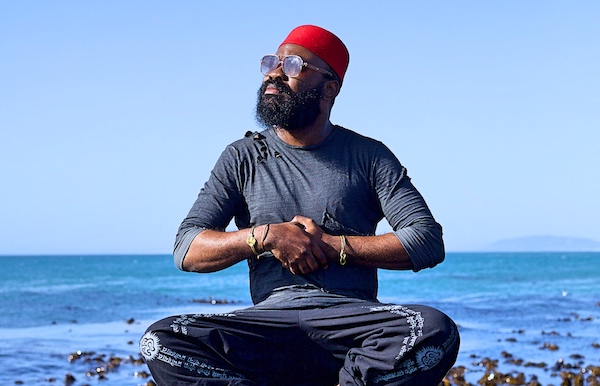Dec 9, 2025 12:28 PM
In Memoriam: Gordon Goodwin, 1954–2025
Gordon Goodwin, an award-winning saxophonist, pianist, bandleader, composer and arranger, died Dec. 8 in Los Angeles.…

Nduduzo Makhathini is among the 25 artists DownBeat thinks will help shape jazz in the decades to come.
(Photo: Ezra Makgope)When he was 17, pianist Nduduzo Makhathini discovered jazz and realized that this was the door he had been seeking. Before that epiphany, music from his homeland, South Africa, had been his inspiration.
Then, when he began studying Western music formally in 2001, he picked up a book of Charlie Parker tunes. This led him to check out John Coltrane’s A Love Supreme from a library.
“Hearing the first track, ‘Acknowledgement,’ where Elvin Jones comes in and plays the groove and then does variations on it, I realized this same feeling was also in my country’s music,” Makhathini said. “The traditional Zulu music of indlamu is based on that same triplet that Elvin plays. The melody of ‘Resolution’ almost evokes the ancient style of Zulu singing called amahubo, which was popularized by Princess Magogo. So, the music I grew up singing in traditional ceremonies and rituals was already jazz in a certain way.”
Since then, Makhathini has made it his mission to bridge his musical DNA with what he calls “the American jazz narrative.”
His explorations are traceable through a handful of albums released since 2014, most on his own label, Gundu. Blue Note released his latest disc, Modes Of Communication: Letters From The Underworlds, on April 3. The musicians assembled for that album share Makhathini’s immersion in South African culture (except for the American-born alto saxophonist Logan Richardson). The recording sessions presented an opportunity for rich cross-cultural connections.
As head of the music department at South Africa’s University of Fort Hare, Makhathini bases his curriculum on the concept of music moving back and forth across cultural bridges. “I try to push for a new option that encompasses the ways in which people understand music locally. We call it the ‘decolonial project,’ where we look for creative ways to open a plurality in how people learn music. Yes, jazz was born in America, and as such, it borrows from Western art music. But in an African context, you also have to pay attention to your upbringing and the things you already know that can inform your way of finding your sound.” DB
This story originally was published in the November 2020 issue of DownBeat. Subscribe here.

Goodwin was one of the most acclaimed, successful and influential jazz musicians of his generation.
Dec 9, 2025 12:28 PM
Gordon Goodwin, an award-winning saxophonist, pianist, bandleader, composer and arranger, died Dec. 8 in Los Angeles.…

Nov 13, 2025 10:00 AM
For results of DownBeat’s 90th Annual Readers Poll, complete with feature articles from our December 2025 issue,…

Flea has returned to his first instrument — the trumpet — and assembled a dream band of jazz musicians to record a new album.
Dec 2, 2025 2:01 AM
After a nearly five-decade career as one of his generation’s defining rock bassists, Flea has returned to his first…

To see the complete list of nominations for the 2026 Grammy Awards, go to grammy.com.
Nov 11, 2025 12:35 PM
The nominations for the 2026 Grammy Awards are in, with plenty to smile about for the worlds of jazz, blues and beyond.…

Drummond was cherished by generations of mainstream jazz listeners and bandleaders for his authoritative tonal presence, a defining quality of his style most apparent when he played his instrument unamplified.
Nov 4, 2025 11:39 AM
Ray Drummond, a first-call bassist who appeared on hundreds of albums as a sideman for some of the top names in jazz…